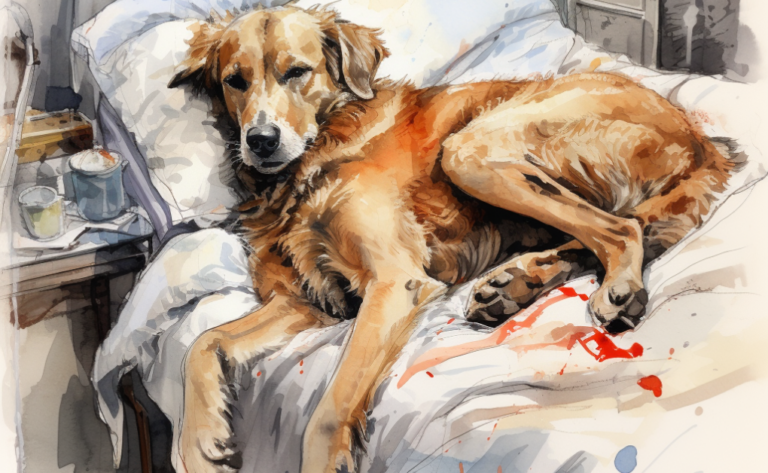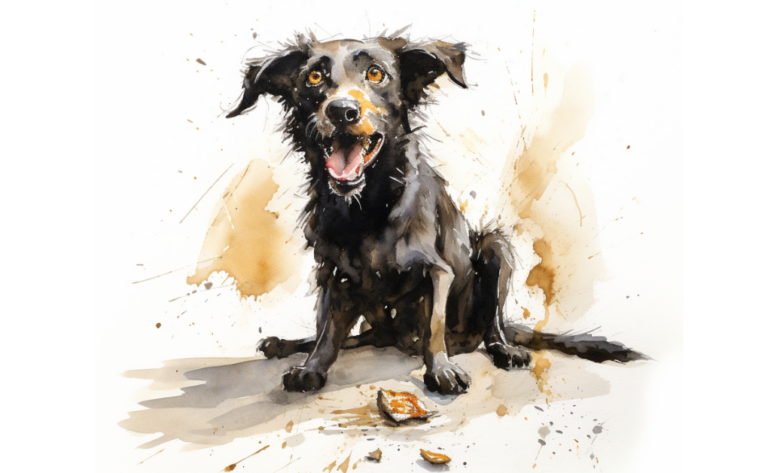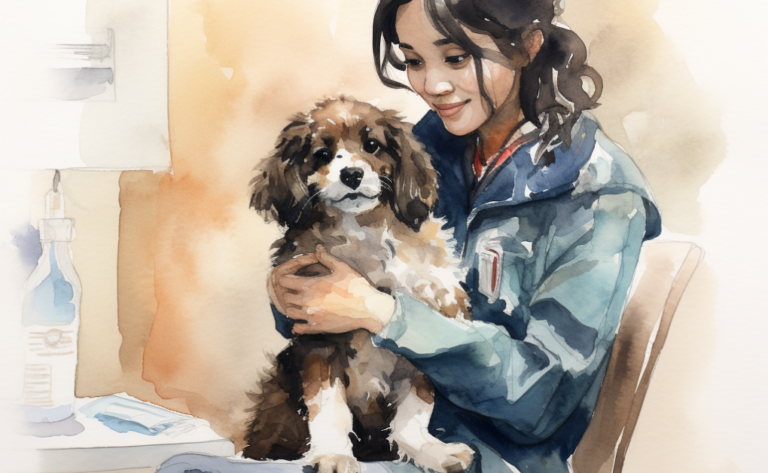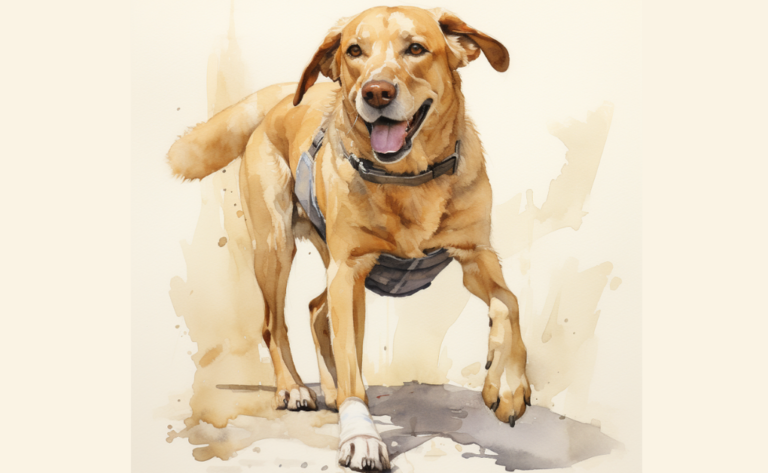What is Liver Disease in Cats?
What is it?
How is it Treated?
Breed Predispositions
Liver disease can affect any cat, regardless of breed, age, or gender.
Introduction
When Karen observed her usually vibrant Maine Coon, Jasper, becoming lethargic, losing weight, and vomiting, she knew something was wrong. Alarmed by these symptoms, she took Jasper to her veterinarian for a detailed evaluation. After conducting blood tests and imaging, the vet diagnosed Jasper with liver disease, a condition that can affect cats of various breeds and ages.
Liver disease in cats is an umbrella term that covers a myriad of conditions impacting the liver’s health and functionality, a crucial organ that handles numerous essential metabolic operations. The liver’s responsibilities are vast, including processing nutrients, detoxifying drugs and toxins, producing proteins required for blood clotting, and generating bile necessary for the digestion of fats, emphasizing that the liver is an important organ in a cat’s body.
When a cat develops liver disease, some aspect of the liver’s functioning is hindered due to inflammation, infection, obstruction, or growths such as tumors. This signifies that the liver is involved in a disease state. The onset of liver disease can be acute, sudden, or chronic, unfolding gradually.
The repercussions of liver disease can severely affect a cat’s overall health. It can interrupt digestion, induce poor appetite leading to weight loss, impair the blood’s clotting ability, and even influence brain function owing to the accumulation of toxins that the ailing liver can no longer process efficiently.
Despite the seriousness of liver disease, the liver holds a remarkable capacity to regenerate. Through early detection and appropriate management, which we can call early treatment, many cats with liver disease can continue to lead quality lives. However, an enlarged liver or a change in liver size can indicate severe liver disease, so close monitoring is essential. It’s pivotal to remember that liver disease can surface due to various underlying issues, each necessitating a distinct management and treatment approach. This liver disease includes but is not limited to Hepatitis, liver shunts, and hepatic lipidosis.
What Does the Liver Do?
The liver is an essential organ in cats and performs various vital functions. These include:
- Detoxification: The liver helps to eliminate toxins from the body. It filters the blood to remove harmful substances like drugs or chemicals that can damage cells and tissues.
- Metabolism: It plays a crucial role in fats, proteins, and carbohydrates metabolism. This involves breaking down these nutrients into usable forms for energy, growth, and repair.
- Protein Synthesis: The liver produces many important proteins, including those involved in blood clotting and immune system function.
- Bile Production: Bile, produced by the liver, aids in the digestion and absorption of dietary fats.
- Storage: The liver stores several vital substances, including vitamins and glucose, which can be released for the body’s needs.
Common Liver Disease in Cats
- Hepatitis: This is an inflammation of the liver, often caused by viral infections, exposure to toxins, or an immune-mediated process.
- Cholangitis/Cholangiohepatitis: Cholangitis is an inflammatory conditions affecting the liver and the bile ducts. Bacterial infections, parasites, or immune-mediated processes can cause them.
- Hepatic Lipidosis (Fatty Liver Disease): This occurs when there is an excessive accumulation of fat in the liver cells, often secondary to other conditions like obesity or rapid weight loss.
- Liver Tumors: While less common, cats can develop benign or malignant tumors in the liver.
- Portosystemic Shunts: These abnormal blood vessels allow blood to bypass the liver, often a congenital condition.
- Drug- or Toxin-induced Hepatopathy: Certain drugs or toxins can damage the liver, leading to dysfunction.
Each condition can present with similar symptoms but may require different treatment approaches, emphasizing the importance of a thorough diagnostic process to identify a cat’s specific cause of liver disease.
What Causes Liver Disease in Cats?
There’s a multitude of factors that can instigate liver disease in cats, which is essentially a liver disorder. Let’s explore some of these:
Infectious Diseases
Infections such as feline infectious peritonitis (FIP), feline leukemia virus (FeLV), and feline immunodeficiency virus (FIV) can pave the way for liver disease by eliciting inflammation and causing damage to the liver tissues. A bacterial infection can also lead to liver inflammation. Such infections often advance undetected and slowly impair the liver’s ability to execute its functions.
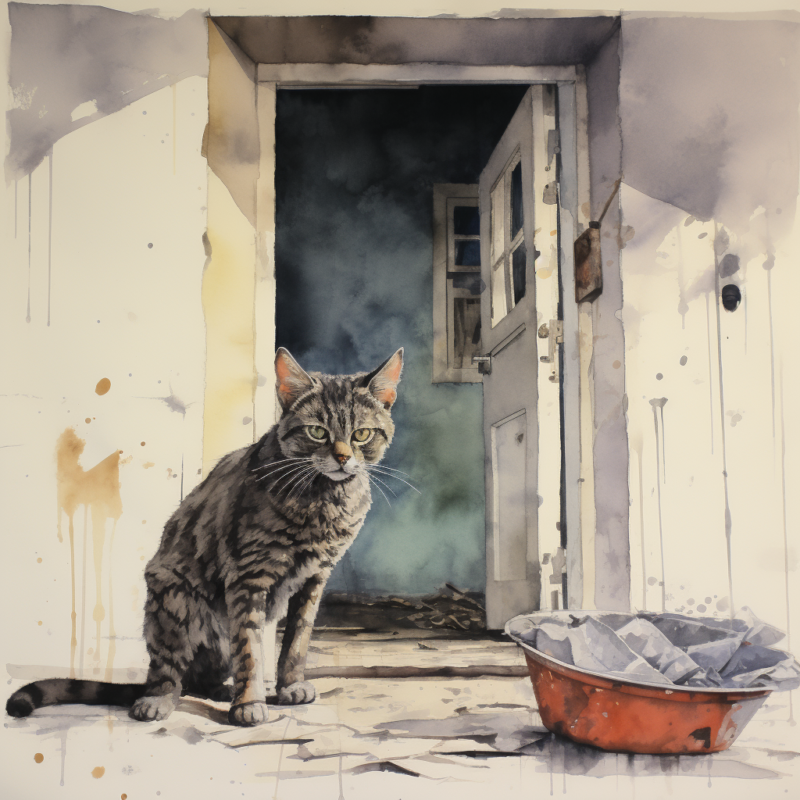
Toxic Substances
Certain drugs, chemicals, plants, and even foods intended for humans can harm a cat’s liver. As the liver is principally responsible for eliminating toxins, excessive exposure to damaging substances can culminate in toxicosis, instigating liver damage or even acute liver failure.
Fatty Liver Disease
Fatty liver disease, otherwise known as hepatic lipidosis, is a common liver disease in cats, transpiring when fat accumulates in the liver cells. This can manifest as a primary condition, frequently due to obesity or sudden severe weight loss, as might be the case with an overweight cat, or secondary to other diseases such as diabetes or cancer. This fat build-up can impede the liver’s function and, if left untreated, pose a severe risk to the cat’s life.
Inherent Disorders
Some cats, even a typical cat, may be born with inherent disorders that impact the liver’s function, such as portosystemic shunts. These abnormal blood vessels allow blood to bypass the liver, resulting in a buildup of toxins in the body. Furthermore, other diseases that spread to the liver, such as certain cancers, can also lead to liver disease.
Symptoms of Liver Disease in Cats
Liver disease can lead to a range of symptoms in an affected cat, indicating signs of liver disease. Such manifestations might include:
- Jaundice, evidenced by a yellowish tint to the skin, gums, and eyes
- Unintended weight loss
- Diminished appetite, or in severe cases, anorexia
- Excessive thirst and increased urination, as cats also have an increased need for water
- Regurgitating or having diarrhea
- Changes in behavior, such as heightened aggression or lethargy
- Experiencing abdominal discomfort or visible swelling
The demonstration of these symptoms can vary based on the liver disease’s root cause and severity. Given that the presence of liver disease can show itself through non-specific symptoms, its early detection may pose a challenge.
Diagnosis of Liver Disease in Cats
Diagnosing liver disease in cats necessitates an integrated approach, incorporating a physical check-up, a review of the cat’s medical history, and a series of diagnostic tests. Your vet aims to distinguish whether it’s a primary liver condition, secondary to another disease process, or a separate systemic disease. Here’s an outline of the diagnostic process:
Blood and Urine Tests
Initial assessment of liver functionality often includes routine blood tests that can help indicate a liver problem. These blood tests can help detect elevated liver enzymes, signifying liver damage, and monitor protein and bilirubin levels shifts, usually under the liver’s regulation. Urine tests may also be employed. Still, it’s important to understand that abnormal results only indicate a liver issue and are not definitive in identifying the disease or its cause.
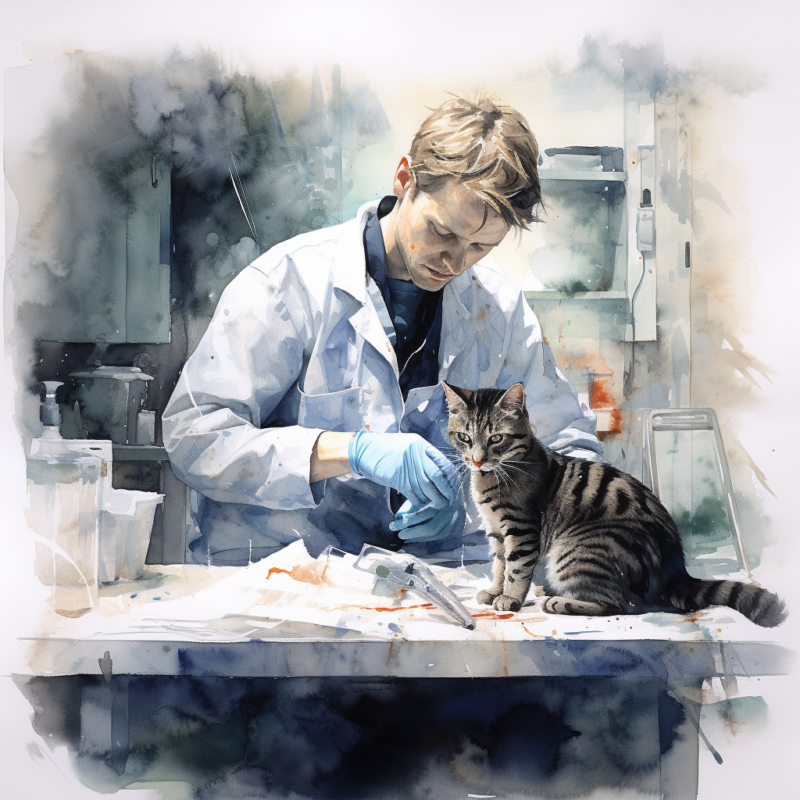
Imaging Examinations
Imaging studies, such as ultrasound or X-rays of the liver and gallbladder, can assist in visualizing the liver’s size, shape, and texture, offering crucial insights into the liver’s health status. They can also help your veterinarian determine abnormalities like tumors, cysts, or cirrhosis-related changes.
Liver Biopsy
A biopsy of the liver, frequently regarded as the gold standard in diagnosing liver disease, involves obtaining a sample of the liver tissue for microscopic examination. This process can reveal the type, cause, and progression of disease in the liver, thereby facilitating a more targeted approach to treatment. It’s also worth noting that cats undergo this procedure, given the crucial information it provides.
Treatment for Liver Disease in Cats
The treatment strategy for liver disorders in cats is primarily hinged upon the underlying cause of the condition. Here’s a synopsis of potential treatment paths:
Nutritional Adjustments
Integral to the management of liver disease in cats are certain dietary changes. High-quality, easy-to-digest proteins in modest amounts can prove beneficial. Such diets also provide highly appetizing, energy-rich meals to counteract the weight loss and malnutrition that liver disease often induces.
Medical Intervention
The nature of the medication administered is determined by the underlying disease causing the liver disorder. For instance, bacterial infections necessitate antibiotics, while anti-inflammatory drugs might be used to manage liver inflammation. In addition, drugs to control symptoms like nausea, pain, or hepatic encephalopathy may also be prescribed.
Fluid Therapy
Fluid therapy becomes required if your cat faces dehydration or considerable fluid loss due to vomiting or diarrhea. This treatment assists in correcting electrolyte imbalances and guarantees the cat’s proper hydration, supporting the functionality of various organs, including the liver.
Surgical Procedure
Situations where the liver disease arises from physical blockages, cysts, or tumors, might call for surgical intervention. The feasibility and success rate of the surgery depends on the cat’s overall health and the specific nature of the liver condition.
Treatment for liver disease often requires a blend of these strategies and is designed according to the cat’s health status and the type of liver disease. With a well-tailored treatment plan, many cats with liver disease can lead a fulfilling life.
Post-Treatment Recovery
The post-treatment recovery for a cat diagnosed with liver disease depends on the specific condition treated, the disease’s severity, and the cat’s overall health. Here’s a general outline of what the recovery process might look like:
- Immediate Post-Treatment Stage
In the immediate aftermath of treatment, especially if surgery or another invasive procedure was involved, your cat might need monitoring at the veterinary hospital. During this period, your vet would manage pain and watch for complications. Your cat might also receive intravenous fluids to ensure hydration and help flush out toxins from the body.
- Home Care
Once your cat stabilizes and is ready to be discharged, you’ll receive specific home care instructions from your veterinarian. This may include a specially formulated diet to support liver health and medications such as antibiotics or anti-inflammatory drugs to manage symptoms or underlying conditions like inflammatory bowel disease. It’s critical to adhere to these guidelines closely and monitor your cat for any signs of complications or worsening symptoms.
- Revisit Appointments
Your cat must return to the vet for follow-up visits to monitor recovery and assess liver function. This could entail blood tests or imaging studies. The frequency and longevity of these visits hinge upon your cat’s condition and the pace of recovery.
- Ongoing Management
In certain instances, liver disease in cats necessitates long-term management. This might encompass continuous dietary alterations, medication, or regular vet visits for liver function monitoring. With the appropriate management, many cats with liver disease can still enjoy a good quality of life.
It’s important to remember that each cat’s recovery journey will be unique. Close communication with your vet throughout the process is vital. Regular vet visits and careful at-home monitoring are key to ensuring your cat receives the care it needs during recovery from liver disease.
Complications of Liver Disease
Complications occur when your cat suffers from more than one type of liver disease. Complications include:
- Jaundice (Icterus) – Jaundice is a condition that causes a yellowing of the cat’s skin, gums, and eyes. It is caused by a high level of bilirubin, a by-product of red blood cell breakdown, and can be a sign of liver dysfunction.
- Ascites – Ascites refer to fluid accumulation in the abdominal cavity, which can occur if liver disease disrupts the liver’s ability to produce proteins that help keep fluid in the blood vessels.
- Hepatic Encephalopathy – Hepatic encephalopathy is a severe neurological disorder that can occur in cats with advanced liver disease. The damaged liver cannot effectively remove waste products from the blood, leading to a buildup of toxins that can adversely affect the brain.
- Coagulation Abnormalities – The liver plays a crucial role in producing proteins that help in blood clotting. If the liver is diseased or damaged, it can lead to clotting disorders, which can cause uncontrolled bleeding.
Each of these complications is serious and requires immediate veterinary attention. Treating the underlying liver disease can help resolve these issues. Ongoing management may be necessary in severe or chronic cases.
Prevention of Liver Disease in Cats
While not all forms of liver disease can be prevented, there are several steps cat owners can take to reduce their cat’s risk and promote overall liver health.
Regular Veterinary Checkups
Regular veterinary checkups are crucial in detecting and preventing liver disease in cats. Vets can perform physical examinations and run blood tests that can identify early signs of liver problems before they progress to serious diseases.
Proper Diet and Nutrition
Feeding your cat a balanced, nutritious diet is one of the best ways to prevent liver disease. Certain nutrients, including antioxidants, B vitamins, and amino acids, can support liver health. Avoid overfeeding and ensure your cat maintains a healthy weight; a veterinarian to get an estimate based on your cat’s as obesity can contribute to liver disease, particularly hepatic lipidosis.
Prevent Exposure to Toxins
Limit your cat’s exposure to toxins as much as possible. Some household plants, chemicals, and medications can be toxic to cats and cause serious liver damage if ingested. Ensure these substances are kept well out of reach of your cat.
Regular Exercise
Regular physical activity can help your cat maintain a healthy weight, which can, in turn, help prevent fatty liver disease. Exercise also promotes overall health and well-being, which can contribute to liver health.
Vaccinations and Parasite Prevention
Keep your cat up-to-date on vaccinations and regular preventative treatments for parasites. Some infectious diseases that can affect cats, such as feline infectious peritonitis (FIP), can cause liver damage.
Regular Hydration
Ensuring your cat has regular access to fresh, clean water can also help maintain overall health and proper liver function. Dehydration can stress the liver and other vital organs, so ensuring your cat is well-hydrated is essential.
These preventative measures can help protect your cat from liver disease and support their overall health and longevity. However, if you notice any changes in your cat’s behavior, eating habits, or general health, always consult your veterinarian for advice.
Frequently Asked Questions
Disclaimer: The information provided on this veterinary website is intended for general educational purposes only and should not be considered as a substitute for professional veterinary advice, diagnosis, or treatment. Always consult a licensed veterinarian for any concerns or questions regarding the health and well-being of your pet. This website does not claim to cover every possible situation or provide exhaustive knowledge on the subjects presented. The owners and contributors of this website are not responsible for any harm or loss that may result from the use or misuse of the information provided herein.


